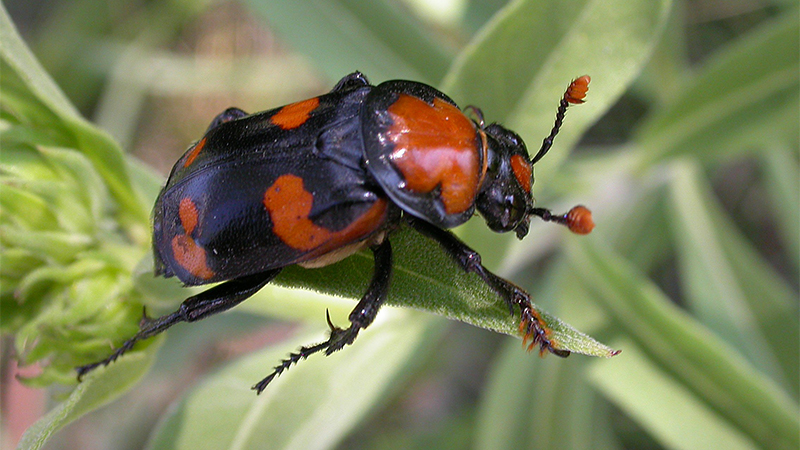Polk County’s Most Wanted — Animal
Published 2:30 pm Thursday, July 6, 2017

- American Burying Beetle (Nicrophorus americanus)
In a joint effort to expand the knowledge and understanding of the flora and fauna of Polk County, the Pacolet Area Conservancy (PAC) and botanist, David Campbell need your help in locating this month’s “Polk County’s Most Wanted-Animal,” a unique and enigmatic insect species – the American Burying Beetle (Nicrophorus americanus).
Commonly referred to as ‘Burying Beetles,’ members of the genus Nicrophorus have a fascinating life history. Adult beetles are able to find carrion using the sensitive chemoreceptors on their antennae.
Once a carcass is located (most commonly a small vertebrate such as a mouse, shrew, small bird, etc.), a pair of adult beetles will excavate the soil beneath the dead organism, and thereby ‘bury it’ – hence their common name. Interestingly, in England these insects are known as ‘Sexton Beetles’. A Sexton was a person employed by churches to bury the dead. Once the prey item is buried in this manner, the adults use their mandibles to chew it into a malleable mass, and lay their eggs upon it. After the eggs hatch, the parents provide care for their larvae, an unusual trait among beetles.
By disposing of dead animals in this way, members of the genus Nicrophorus render a valuable service by denying potentially disease-carrying flies a place to breed.
The American Burying Beetle is large, attaining a length of over 1.5 inches. The coloration of this (and most other members of the genus) is a black body with various red or orange markings upon the head and thorax. Unlike other closely related species in our area, the American Burying Beetle has an orange/red thorax that is distinctive. This particular species is also nocturnal, often recorded as being attracted to artificial lights, a trait that may have led to its current scarcity.
At one time, the American Burying Beetle was known throughout eastern North America. However, for reasons not yet completely understood, this species suffered a precipitous decline in the early to mid-twentieth century. Various factors have advanced the decline of this species including artificial lights, pesticides, changing land use patterns, an unknown pathogen, or a combination of all of these. In any case, the American Burying Beetle is currently known from only a handful of localities, and is listed by the federal government as an endangered species.
Historically, the American Burying Beetle occurred throughout the Piedmont, Sandhills, and low mountains of North Carolina, as attested by several specimens in the NC State Insect Collection. Although no specimens are known from Polk County, it has been taken in nearby counties, and it is reasonable to assume that this species once occurred in our area (and may still occur here). Label data for most NC specimens indicate a peak of occurrence from May through July.
Individuals that are interested in searching for this species should look around lights (particularly mercury vapor, or black lights) or examine recently dead, small vertebrates. American Burying Beetles may be present in a given area without being readily noticed. Special trapping methods are often employed to find them but special permits are required for this activity. If you happen to see this species anywhere in the Southeast, please try and take a photograph and pass it along to the Pacolet Area Conservancy or the United States Fish and Wildlife Service.
If you feel that you have seen American Burying Beetle, or any other Polk County’s Most Wanted species, please contact staff at the Pacolet Area Conservancy at 828-859-5060, or e-mail comments, questions, or photos to landprotection@pacolet.org.
All of the Polk County’s Most Wanted can be viewed on the PAC website, www.pacolet.org. Click on the “conservation” tab and scroll down and click on the “Polk County’s Most Wanted” tab.
PAC has also created a Pocket Guide of Polk County’s Most Wanted that can be printed and taken in the field! The pocket guide can be accessed on PAC’s website, too.
– article by David Campbell





